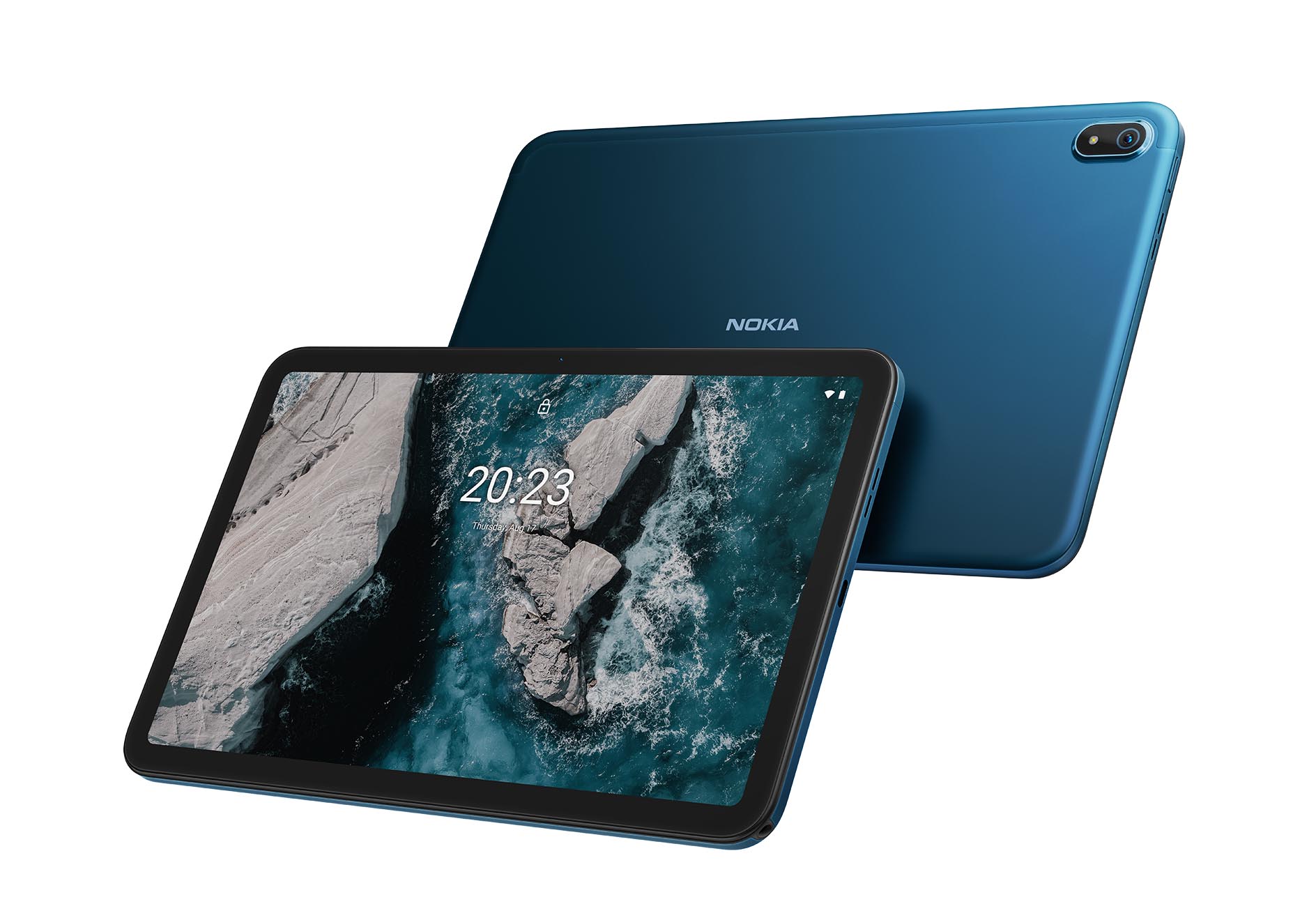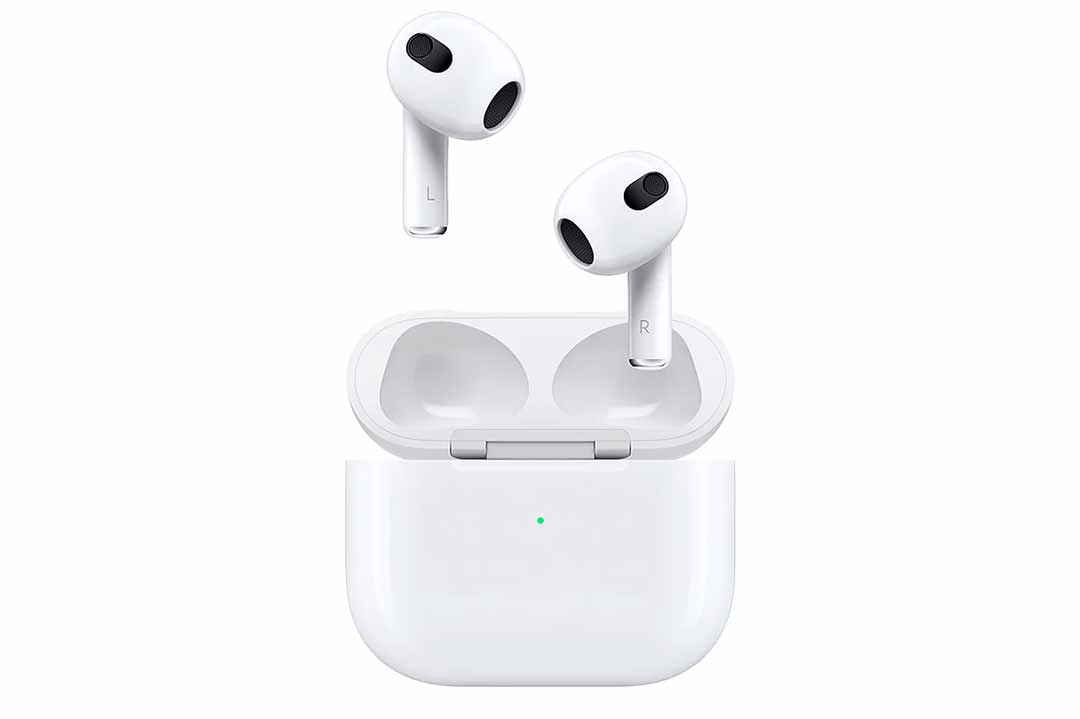Best Christmas gifts for gadget lovers, from iPads and headphones to tablets and keyboards
We take a look at the gadgety gifts your loved ones will love, from Apple's lovely AirPods to the latest tablets.

Best tablets for Christmas
Apple iPad Air
It’s something of a shame that Apple’s iPad no longer comes in just a single version, as it originally did when the company invented (or, technically, reinvented) the tablet computer. Today, there is the iPad Mini, iPad Air and iPad Pro — all of which are available with all sorts of colours, storage options and extra gizmos.
So which one should you get? The original iPad is a bit old-fashioned next to the other shiny things you’ll see in John Lewis, but a relative bargain at just over £300; the Mini is beautiful and ideal for train commuters who might not want to fight with a giant slab; the iPad Pro is an exceptional piece of kit and an ideal laptop-replacement, especially if you pair it with Apple’s superb (and eye-wateringly expensive) Magic Keyboard, that’s also a cover and stand.
But if you just want an honest iPad that’s a bit of everything, the iPad Air is the sweetspot.

It's thin, light, has a truly wonderful screen from which colours and light pop effortlessly, and is as powerful as any sane human could want. Arty types (and Luddites who still like to write by hand) swear by the Apple Pencil to go with it, but most of us will live without it. And though they make a Magic Keyboard for the Air, it’s hugely expensive and just a little too small to make this a true laptop replacement — the sub-11-inch size just isn’t quite enough, and there are better external keyboard options if you want to use it for work.
Amazon Fire HD 10 and Nokia T20
The Amazon Fire HD10 has some great advantages: it's relatively cheap (especially if you buy it for £80 or £90 during one of Amazon's regular promotions), it's very usable, has a decent screen (unlike it's seven and eight-inch little brothers), is quick enough for most people's purposes and can be set up to be kid-friendly.
It also has some disadvantages: you have to do a whole load of fiddling to load any apps you need from the Google Play Store, it feels fairly cheap and plasticky (as do its seven- and eight-inch little brothers), has huge black borders (known as bezels) around the edge of the screen, and it'll help Jeff Bezos fund his next space flight.
Sign up for the Country Life Newsletter
Exquisite houses, the beauty of Nature, and how to get the most from your life, straight to your inbox.

It also used to be pretty much the only reasonably-priced, reasonably-quality tablet we've come across (unless you're brave enough to order things direct from China). Now, there's a new pretender to the throne in the form of Nokia T20.
It's beautifully built (it genuinely doesn't feel far off an iPad on that score), has a lovely screen, is easy to use, can be set up to be kid-friendly and is perfectly smooth and fast unless for normal web browsing/email/BBC iPlayer/ reading digital magazines.

It does, however, have one big disadvantage: at the moment, due to a technical limitation, you can only watch the big streaming services Netflix (and Disney+, and Prime Video) in SD, aka 'standard definition', which is what your TV would have had in the 1980s.
That might not sound like a big deal, but it really is very fuzzy compared to what you'll get with most devices; considering that watching Netflix is hugely important to lots of tablet buyers, that's close to an unforgivable flaw. Don't rule it out though: at some point it'll probably be fixed via an update, and both iPlayer and YouTube work fine. Plus you're not paying for Jeff's new spaceboots.
Bluetooth keyboard
MX Keys Mini
You can buy an external keyboard for a few pounds; the problem is that it’ll look and feel as if it didn’t even cost that much. To get something better, you’ll want to get a keyboard from a decent manufacturer such as Logitech, who’ve a hard-won reputation for making superb keyboards and mice that feel just right. Having been using this dinky Bluetooth keyboard one for a few weeks, I'd say they've nailed it again: pressing the keys is as joyful and moreish as, ooh, chewing a jelly baby.

I now dread using the built-in keyboard on my work laptop, whose keys look pretty but have so little ‘travel’ (i.e. the depth that they sink down when pressed) that it feels more like tapping on a touchscreen than typing on a traditional keyboard. The MX Keys Mini is also rock-solid, with rubber feet and enough weight to stop it sliding around in use.
Best headphones
If you're looking to listen to music, don't miss our piece on the best smart speakers — they're a bit creepy, sure, but they work really well. Especially the Apple HomePod Mini and the Echo dot.
For music pumped direct into your ears, however, you can spend a small fortune on a pair of headphones; if you’re a professional DJ or a quality-crazed audiophile (is there any other type?) then that probably makes sense — for those people, headsets such as the Bang & Olufsen Beoplay HX headphones, at almost £450, are the way to go. For a similar vibe without the need for a mortgage extension, the Marshall Major IVs are a real favourite, look glorious, have incredible battery life and currently just £79 at John Lewis.

Most of us prefer not to look like we’re on a Balearic nightclub stage while listening to music or making Zoom calls, however, and that’s why earbuds have taken over the earth.
But which ones should you get? The choices are near endless, and considering how easy they are to lose then a £20 pair such as these or a tied-together pair like this are absolutely what more careless readers should go for. Apart from that though, here’s our two-penneth.
For those keen on wearing wireless earbuds while exercising, then the Google Pixel Buds A-Series at £99 have very good sound quality and a rock-solid Bluetooth connection (hugely important when on the move) and have a reassuring little arm which fixes them solidly in your ear. They also work brilliantly with Google Translate, offering near-simultaneous translations; it’s as close as you’ll get to the Babelfish of Hitchhiker’s Guide to the Galaxy fame with 2021 technology.

If you want to block out the rest of the world’s endless noise and revel in concert-quality sound, then Bose’s £249 QuietComfort Earbuds are basically as good as these things get.
What if you don’t want to block the world out, though? It’s not a silly question., All the above have something in common: they use those rubbery little in-ear things, which create a seal with your ear, massively improving sound quality and (in particular bass notes). The greatest strength of that is also the greatest weakness: you can’t hear much around you, particularly your own voice, which makes them decidedly odd when using them for video calls.
Best bet if that’s an issue for you are the Apple AirPods 3rd generation. They were overshadowed over Black Friday last month, since the technically superior Apple AirPods Pro were widely discounted to not much more than the £169 price. But the latest AirPods are a brilliant choice that you can wear all day in comfort and let you carry on with your day (including those calls) without popping them in and out every few minutes.

The sound quality is good, and they even have a special trick up their metaphorical sleeves: spatial audio, which delivers an uncanny close-your-eyes-and-you-could-be-there 3D effect, so much so that the sound direction changes as you move your head. The caveat? As is not uncommon with Apple’s goodies, you’ll only really feel the benefit if all your other things are made by Apple as well.

Best smart speakers for non-techie people: What to expect, what you'll love and what doesn't work
Smart speakers are no longer the preserve of tech geeks and millennials — these handy speakers are, and (as we'll discover)

Credit: Getty Images/Tetra images
The Utterly Inessential Shopping List: Supercharged home Wi-Fi, smart headphones and a mobile phone literally anyone can use
Our Utterly Inessential Shopping List returns with some technology that is far cleverer than we are.
Toby Keel is Country Life's Digital Director, and has been running the website and social media channels since 2016. A former sports journalist, he writes about property, cars, lifestyle, travel, nature.
-
 Six rural properties with space, charm and endless views, as seen in Country Life
Six rural properties with space, charm and endless views, as seen in Country LifeWe take a look at some of the best houses to come to the market via Country Life in the past week.
By Toby Keel
-
 Exploring the countryside is essential for our wellbeing, but Right to Roam is going backwards
Exploring the countryside is essential for our wellbeing, but Right to Roam is going backwardsCampaigners in England often point to Scotland as an example of how brilliantly Right to Roam works, but it's not all it's cracked up to be, says Patrick Galbraith.
By Patrick Galbraith
